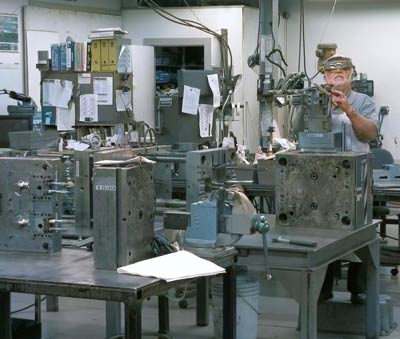Keeping your plastic injection molds properly maintained is crucial to the long-term success of any molding program. When doing so, you will drive down costs, reduce downtime, and keep deliveries on schedule, all leading to better profitability. Today, we’ll take a deeper look at the benefits of proper mold maintenance, and dive into some tips on how to keep your injection molds properly maintained and functioning.
Benefits of Proper Mold Maintenance
 Improved Quality – Proper mold maintenance will lead to higher quality products by preventing defects such as flash, sink marks, and warpage.
Improved Quality – Proper mold maintenance will lead to higher quality products by preventing defects such as flash, sink marks, and warpage.- Increased Lifespan – A well-maintained mold can last for many years, saving money on replacement costs.
- Reduced Downtime – Mold breakdowns can cause significant downtime, depending on the extent of the damage. Turn times could be substantially extended as a result, leading to weeks or even months in the event a new mold may be required. Preventing mold breakdowns with a solid maintenance program will help keep production running smoothly and on schedule.
- Improved Efficiency – A well-maintained mold will operate more efficiently, leading to faster cycle times and increased production output. As an added bonus, scrap rates will be reduced as well. This is good for your bottom line, and the environment.
Tips for Maintaining Your Plastic Injection Molds
Before we jump in, let’s keep in mind that in almost all contract molding arrangements, the molding facility is responsible for maintaining and storing the injection molds. Since you are ultimately at their mercy, it’s important to make sure they have proven (and well- documented) maintenance procedures in place.
Maintenance broadly fits into three categories as follows:
- Preventative Maintenance – is performed on a regular schedule to help prevent problems before they occur. This typically includes cleaning, lubrication, and inspection of the mold. More on that in a minute.
- Corrective Maintenance – is done to repair problems that have already occurred. This usually consists of repairing damaged parts, replacing worn components, and adjusting mold settings.
- Predictive Maintenance – uses technology to monitor mold performance and identify potential problems before they occur. This can help to prevent costly repairs, unplanned downtime, and extend the lifespan of the mold.
We recommend performing preventive maintenance on a monthly or quarterly basis, depending on the types of mold, material, and production schedule. This should include:
- Cleaning the mold regularly to remove debris and buildup.
- Lubricating the mold to help prevent wear and tear on the moving parts.
- Inspecting the mold for damage. The idea is to catch small problems before they turn into much bigger ones.
- Keeping a maintenance log that tracks the mold’s history and to help identify trends that may indicate potential problems.
At PDI, we inspect every mold for wear and damage after each run, regardless of run time. The maintenance plan is dictated by how many cycles it has endured. For instance, if the run was short, it will undergo a simple cleaning and greasing. Longer runs will undergo a complete cleaning, including disassembly and sonic cleaning. More complex molds that have endured higher runs will go through this as well, but may also have components such as gears changed.
Proper storage is as important as a good maintenance program. Molds should be stored in dry, climate-controlled environments. Remember, moisture and steel don’t mix!
Let’s face it: plastic injection molds are costly investments. So, just as you would do with you car, or any other big-ticket mechanical item, make sure injection molds are properly maintained and stored. Be sure to work with a shop that’s protecting your investment. Doing so will lead to improved efficiency, predictable delivery times, fewer headaches, and the best part: increased profits.

 Improved Quality – Proper mold maintenance will lead to higher quality products by preventing defects such as flash, sink marks, and warpage.
Improved Quality – Proper mold maintenance will lead to higher quality products by preventing defects such as flash, sink marks, and warpage.
Comments are closed